The Soldier's Details

- Surname:
- Armstrong
- First Name:
- Leonard
- Nick Name:
- Len
- Rank:
- Private
- Regimental #:
- WX8963
- Company:
- ‘A’ Company 5 Platoon
- Enlisted:
- 25.10.1940
- Discharged:
- 13.12.1945
- DOB:
- 25.02.1914
- Place of Birth:
- Perth, Western Australia
- Father's Name:
- Horace Lewis Armstrong
- Mothers's Name:
- Jessie May Armstrong
- Religion:
- Methodist
- Pre-war Occupation:
- Hairdresser
- Singapore:
- Selarang Camp Changi, Johore Bahru, Adam Park, River Valley Road Camp, Selarang Barracks Changi
- Force:
- 'D' Force Thailand, S Battalion
- Camps Thailand:
- Tarsau, Kanu II, Hintok, Tamuang
- Camps Japan:
- Yamane, Nihama
- POW#:
- 8748, 1561
- Japan:
- Rashin Maru Party
- Return Details 1945:
- Wakayam-Okinawa, USS Sanctuary, Okinawa-Manila, USS Bingham, Manila-Morotai-Darwin, PBY Catalina aircraft A24-306, Darwin~Perth by aircraft 10.10.1945.
General Description
Len Armstrong enlisted AIF 25 Oct 1940 and later joined 2/4th MGB’s ‘A’ Company 5 Platoon under C.O.s Lt Walton and Lt Learmonth.
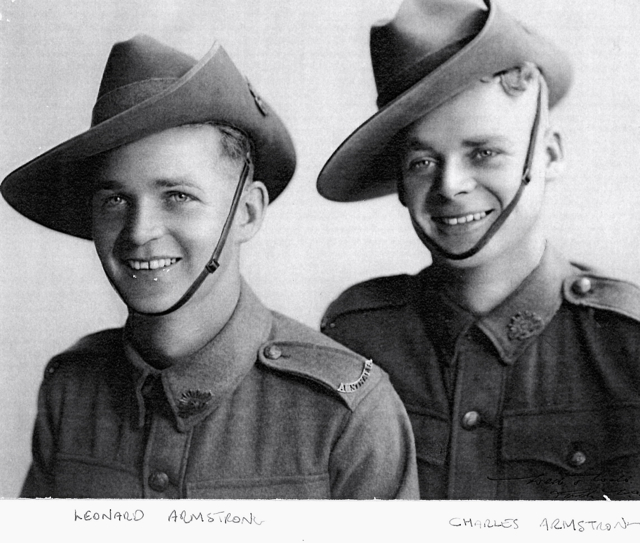
Charles Armstrong enlisted AIF 6 Aug 1940, later joining 2/4th MGB’s ‘B’ Company 8 Platoon under Lt MacKinnon. The two brothers, Charles and Len left Singapore to work on the Burma-Thai Railway with ‘D’ Force Thailand, S Battalion.
They both left to work in Japan at Yamane and Niihama.
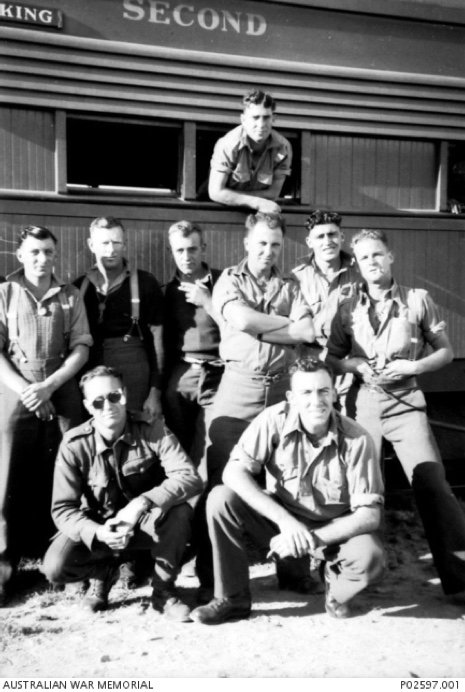
Standing: Left-right C. Vidler, B.Fitzgerald, H.E. Saw, N.H.E Thompson, L.M. Murray, L. Armstrong.
Front Row: Left-right D.F. Sterrett, John Gilmour.
At Window: C.J. McDonald. 1941 Woodside SA.
Photograph taken by John Lane, donated AWM.
Len left by train from Singapore to Thailand to work on the Burma-Thai Railway with ‘D’ Force S Battalion.
From the railway, Len and Charlies were selected fit to work in Japan by the Japanese. His was a 70 day trip to Japan on ‘Rashin’ Maru.
_______________
Len was the eldest of the two brothers, born 1914 Perth to parents Horace Lewis Armstrong and Jessie May Pearce who married 1905. His twin sister was Lorna. Charles was born 1920 at Harvey. (Lorna died in 1997).
Armstrong (Snr) was Postmaster at Mingenew in 1917 when he enlisted at Geraldton, joining 3rd Divisional Signal Company, as a sapper aged 35 years Service No. 19771. He served in Europe and returned Fremantle April 1919.
His skills as Postmaster gave him the required skills for Signals in WW1.
Older son Cecil died 2 May 1920 at Harvey aged 12 years.
Below: Charlie was born April 1920

Below: Their brother Cecil died nearly a month later aged 12 years in May 1920.
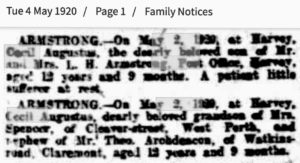

Len Armstrong returned to take up his hairdressing profession. He was frequently visited by his 2/4th mates for a ‘cut and chat’.
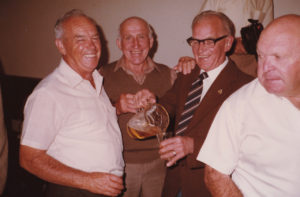
Above: L-R Greg Burdon, Claude Dow, Len Armstrong, Ron Badock – 1985 Anzac Day reunion.
His mother Jessie died 1977 aged 92 years at Royal Perth Hospital. His father died 1956, aged 74 years also at Royal Perth Hospital.
Len married in 1951 to Margaret May Robinson. She died in 2002 aged 78 years.
Len died 30 July 1995 at Mt. Pleasant aged 81 years. He was cremated at Karrakatta Cemetery.
His brother Charlie Armstrong died 14 November 1996.

****The photographs and information below have been included to provide an idea of what sappers in WW1 Signals undertook, and the dangers they faced working out in the field.
During warfare, a commander needs to know:
-
where his troops are and what they’re doing
-
whether he has sufficient supplies
Signallers are responsible for these military communications.
Sappers (signallers) had to be proficient in:
-
Morse code signalling on flag, lamp and heliograph
-
map reading
Successful candidates were classified as first-class signallers and wore crossed flags with a star on their right forearm. Those with slower speeds qualified as second-class signallers and wore the flags without the star.
(Signallers were also dispatch riders. They usually supplied their own bicycles or motorbikes.)
The sappers were exposed to danger from enemy snipers when they:
-
delivered messages manually
-
repaired telephone lines
Manual signalling was vital when the army moved too quickly to establish a telephone network
As dispatch messengers, they had to ride or run with messages throughout the trenches:
‘It was across this exposed spot that many times I had to run despatches. The ridge on the right, where shrapnel can be seen bursting, was thick with snipers, who had this patch so well set that they rarely missed their mark. Many poor chaps got caught when trying to get across. I wondered if I was to join them.’
Below: Photographs and information from AWM.
The Wireless Section of the 3rd Australian Divisional Signal Company, marching through the main street passing an American Division making its way to a sector of the fighting area from which the Australians had just been withdrawn.
Two days later, on the relief of the 2nd Division, who had succeeded in penetrating to the entire limits of the Hindenburg Defences, the whole of the Australian front passed to the 2nd American Corps, and the Australian Corps, with the exception of Artillery units, which continued operations until the Armistice, returned to a rest area behind Amiens. Australian War Memorial – Accession Number E03501 Place made France: Picardie, Somme, Peronne Date made 4 October 1918
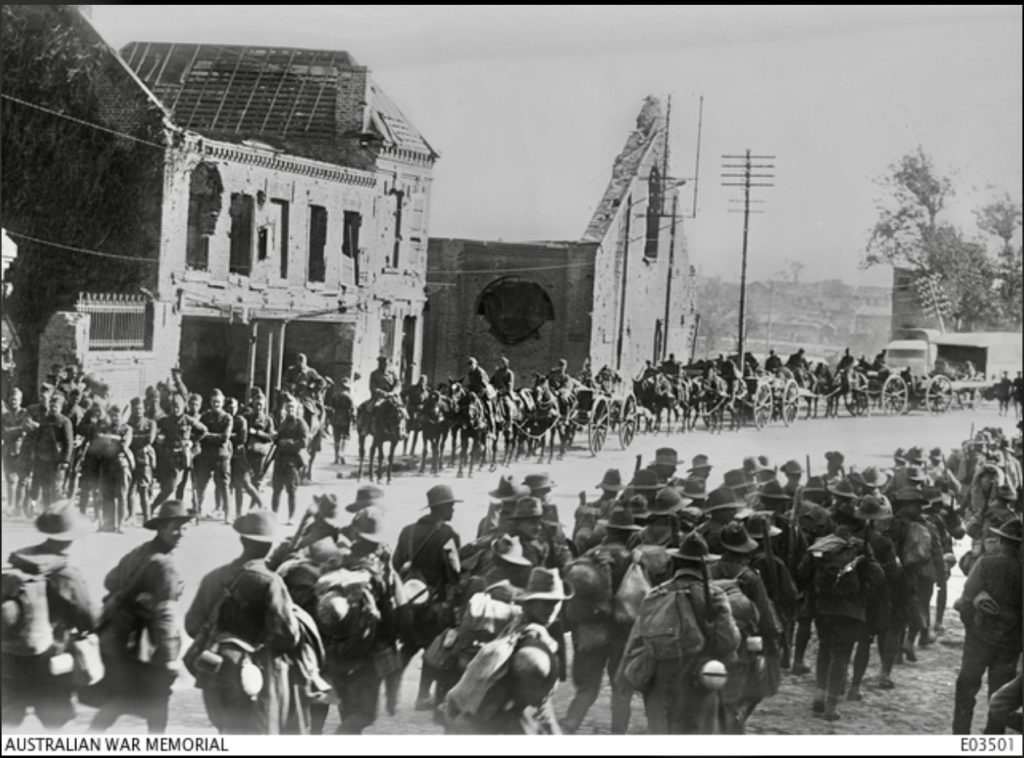

Above: A cable section of the 3rd Divisional Signal Company laying a telephone cable near Ronssoy, when the 3rd Division assisted in retrieving the misfortune of the 27th American Division in the left sector over the canal tunnel against Bony and Le Catelet on the Main Hindenburg Line. Australian War Memorial – Accession Number E03385 Place made France: Picardie, Somme, Peronne, Ronssoy Date made 30 September 1918

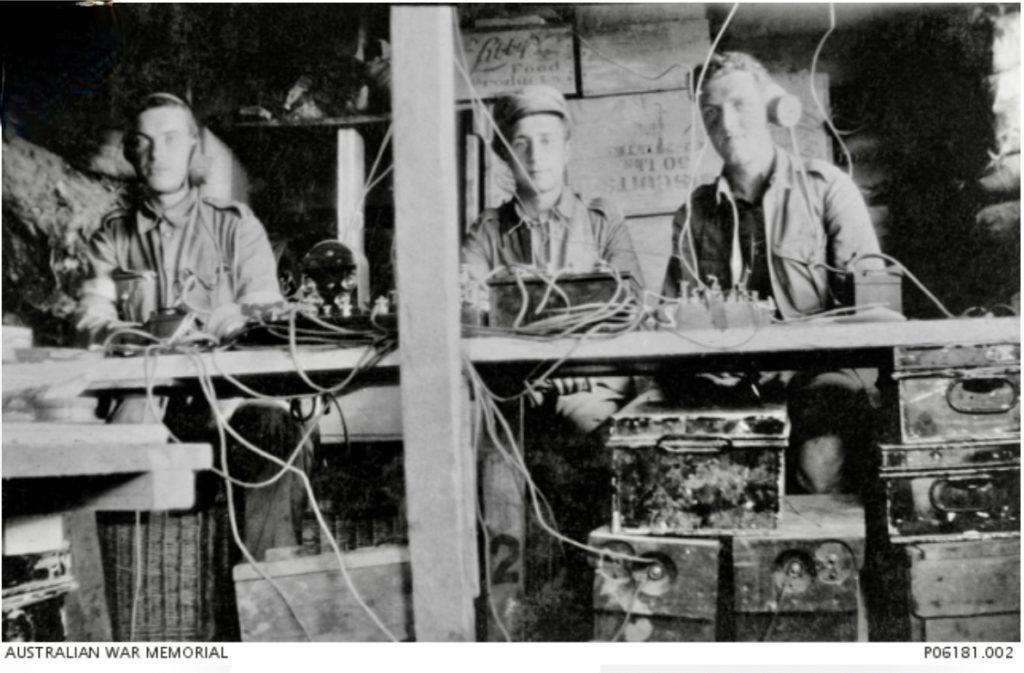
Above: Three signallers sit in their dugout. Soldiers on either side are wearing headphones and their signalling equipment is set up on the bench in front of them, connected to boxes underneath. Boxes of biscuits are stacked behind them. AWM P06181.002
Camp Locations:
- Johore Bahru, - Malaysia
- River Valley Road Camp - Singapore
- Selarang Barracks Changi - Singapore
- Selarang Camp Changi - Singapore
- Kanu II, 152.30k - Thailand
- Tamuang, Tha Muang 39k - Thailand
- Tarsau, Tha Sao 125k - Thailand
- Nihama, Hiroshima #2-B- Japan
- Yamane, Hiroshima #3-D - Japan





